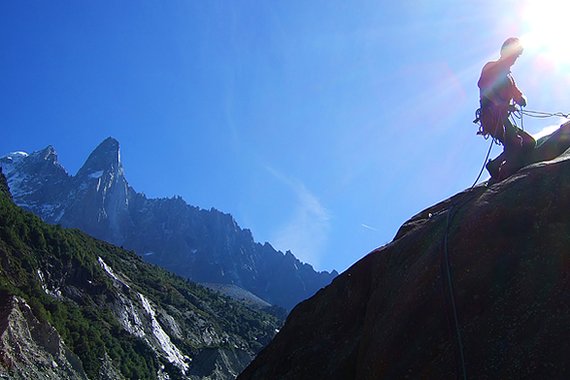When multi-pitch climbing, knowing how to efficiently manage your rope enables you to climb safer and faster. Learning how to properly control and throw your climbing rope while rappelling is especially important to ensure that you avoid harming other climbers and prevent the rope from tangling below you. Be sure to seek professional instruction from a trusted mentor or AMGA-certified guiding service to supplement these tips.
Learn three approaches to managing your rope for rappels with these descriptions:
Benefits of proper rope management
- Prevent the rope from hitting climbers below you
- Manage the rope’s descent during high winds
- Miniminize rope entanglements
- Throw the rope further and more accurately
Related: The Essential Guide to Buying Your First Climbing Rope
Rope-throwing Techniques
Middle First
The “Middle First” approach simply entails tossing the first half of the rope before throwing the other end. By throwing one section at a time instead of the entire rope at once, you benefit from a cleaner toss that reduces the chance of entanglements. In doing so, you can set yourself up for a cleaner fallen as you rappel.
Torpedo
This method is best for ensuring that your rope lands cleanly down below you when coping with windy conditions. The “torpedo” approach involves creating a pseudo “torpedo” on both ends of your climbing rope before tossing each end to ensure that they have enough force to stay on course and stay untangled below you. After you’ve separated two neat piles of your rope from the middle, take the the last several feet on both ends and ball them up into a “torpedo.” Then, toss your torpedoes as hard as you can, allowing your rope to hang untangled and straight down from the anchor point.
Saddle Bags
The”Saddle Bag” rope management technique while rappelling is ideal for both windy situations and in circumstances where other people are climbing below you. By coiling the rope into “saddle bags” on each side of your harness using a girth-hitched sling, the rope gradually feeds out of each “saddle bag” as you rappel—providing greater control of the rope and preventing anyone from being hit below you.
Related: An Overview of Hitches and Knots








